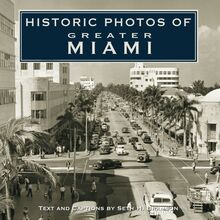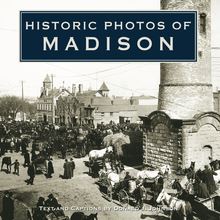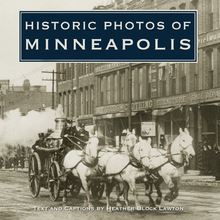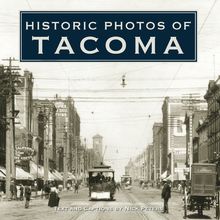Historic Photos of Columbus , livre ebook
139
pages
English
Ebooks
2007
Vous pourrez modifier la taille du texte de cet ouvrage
Obtenez un accès à la bibliothèque pour le consulter en ligne En savoir plus
Découvre YouScribe en t'inscrivant gratuitement
Découvre YouScribe en t'inscrivant gratuitement
139
pages
English
Ebooks
2007
Vous pourrez modifier la taille du texte de cet ouvrage
Obtenez un accès à la bibliothèque pour le consulter en ligne En savoir plus
Publié par
Date de parution
01 janvier 2007
Nombre de lectures
1
EAN13
9781618586162
Langue
English
Poids de l'ouvrage
8 Mo
Publié par
Date de parution
01 janvier 2007
Nombre de lectures
1
EAN13
9781618586162
Langue
English
Poids de l'ouvrage
8 Mo
HISTORIC PHOTOS OF
COLUMBUS
T EXT AND C APTIONS BY N ICK T AGGART
An aerial view of Columbus looking west in 1965
HISTORIC PHOTOS OF
COLUMBUS
Turner Publishing Company
200 4th Avenue North Suite 950
Nashville, Tennessee 37219
(615) 255-2665
www.turnerpublishing.com
Historic Photos of Columbus
Copyright 2007 Turner Publishing Company
All rights reserved.
This book or any part thereof may not be reproduced or transmitted in any form or by any means, electronic or mechanical, including photocopying, recording, or by any information storage and retrieval system, without permission in writing from the publisher.
Library of Congress Control Number: 2006909499
ISBN13: 978-1-59652-313-5
Printed in the United States of America
08 09 10 11 12 13 14- 0 9 8 7 6 5 4 3 2
C ONTENTS
A CKNOWLEDGMENTS
P REFACE
B ORN TO B E THE C APITAL (1812-1897)
B ETWEEN THE F LOODS (1898-1913)
G OOD O LD C OLUMBUS T OWN (1914-1930)
T HE A LL A MERICAN C ITY (1931-1970)
N OTES ON THE P HOTOGRAPHS
This photo of the former Franklin County Courthouse was taken shortly after it was completed in 1887. It occupied the southeast corner of High and Mound streets. George Bellows, Sr., father of the famous artist, was the Superintendent of Construction.
A CKNOWLEDGMENTS
This volume, Historic Photos of Columbus , is the result of the cooperation and efforts of many individuals and organizations. It takes a community to preserve local history, especially visual history. The photographs featured in this book come from the Columbus in Historic Photographs collection, maintained by the Biography, History, and Travel Division of the Columbus Metropolitan Library. This archive of images has been collected over time from a variety of sources, not the least of which have been interested members of the general public. It is through the combined effort of individuals that our collective history is preserved.
This volume would not have been possible without the professional and amateur historians devoted to preserving the past, including the dedicated staff-past and present-of the Biography, History, and Travel Division of the Columbus Metropolitan Library.
The author also wishes to acknowledge and thank his wife, Michele, for her suggestions and editing skills. Her contributions have made this a better book.
The publisher would also like to thank Nick Taggart, the author, for his valuable contributions and assistance in making this work possible.
P REFACE
Columbus has thousands of historic photographs that reside in archives, both locally and nationally. This book began with the observation that, while those photographs are of great interest to many, they are not easily accessible. During a time when Columbus is looking ahead and evaluating its future course, many people are asking, How do we treat the past? These decisions affect every aspect of the city-architecture, public spaces, commerce, infrastructure-and these, in turn, affect the way that people live their lives. This book seeks to provide easy access to a valuable, objective look into the history of Columbus.
The power of photographs is that they are less subjective than words in their treatment of history. Although the photographer can make decisions regarding subject matter and how to capture and present it, photographs do not provide the breadth of interpretation that text does. For this reason, they offer an original, untainted perspective that allows the viewer to interpret and observe.
This project represents countless hours of review and research. The researchers and writer have reviewed thousands of photographs in numerous archives. We greatly appreciate the generous assistance of those listed in the acknowledgments of this work, without whom this project could not have been completed.
The goal in publishing this work is to provide broader access to this set of extraordinary photographs which seek to inspire, provide perspective, and evoke insight that might assist people who are responsible for determining Columbus s future. In addition, the book seeks to preserve the past with adequate respect and reverence.
With the exception of touching up imperfections caused by the damage of time and cropping where necessary, no other changes have been made. The focus and clarity of many images is limited to the technology and the ability of the photographer at the time they were taken.
The work is divided into eras. Beginning with some of the earliest known photographs of Columbus, the first section records photographs from before the Civil War through the late nineteenth century. The second section spans the years 1898 to 1913. Section Three moves from 1914 to the beginning of the Depression era. The last section covers the 1930s up to 1970.
In each of these sections we have made an effort to capture various aspects of life through our selection of photographs. People, commerce, transportation, infrastructure, religious institutions, and educational institutions have been included to provide a broad perspective.
We encourage readers to reflect as they go walking in Columbus, strolling through the city, its parks, and its neighborhoods. It is the publisher s hope that in utilizing this work, longtime residents will learn something new and that new residents will gain a perspective on where Columbus has been, so that each can contribute to its future.
Todd Bottorff, Publisher
It s Market Day on South Fourth Street in 1897. The building on the left with the bell tower is the old Central Market. The area was known as the Hub.
B ORN TO B E THE C APITAL
1812-1897
Location, location, location is the realtor s mantra, and it was just as true in the early nineteenth century as it is today. Soon after achieving statehood in 1803, Ohio began looking for a permanent capital near its geographical center. There was stiff competition among central Ohio towns, but four proprietors of the land east of the Scioto River, opposite the town of Franklinton, submitted an offer too good to refuse. Lyne Starling, John Kerr, Alexander McLaughlin, and James Johnston were willing to lay out a town on 1,200 acres and to construct public buildings and a penitentiary for the state.
On February 14, 1812, Ohio s General Assembly accepted the offer. After a suggestion from Joseph Foos, both the Senate and House voted to adopt the name Columbus for the new capital.
The early years were rough as the residents began to carve out a city. Improved modes of transportation brought more people and goods to the city. The Ohio and Erie Canal, the National Road, and, finally, the railroad helped connect Columbus to the rest of the world, but unsanitary conditions led to cholera epidemics in the 1830s and 1840s that killed hundreds.
With the completion of the Greek Revival-style Ohio Statehouse in 1861, Columbus began to look more like a capital city just as Civil War soldiers began roaming its streets.
A postwar boom saw the city s population quadruple between 1870 and the end of the century. Grander government buildings were testament to the prosperity Columbus was generating. A new city hall, erected in 1872, replaced cramped offices in the old Central Market building. In 1887, a beautiful new Franklin County courthouse was completed on South High Street at a cost of $470,000. Its French Second Empire architecture with tall towers and mansard roofs was a statement of modernity for the day.
Nearly a decade later in 1888, the city hosted the Ohio Centennial, a celebration of the first Ohio settlement at Marietta. Not only were other Ohioans introduced to the attractions of Columbus, but so too was the rest of the country when in the same year, the Grand Army of the Republic chose Ohio s capital as the site of its largest ever National Encampment. Columbus, with a population less than ninety thousand people, hosted a quarter of a million visitors. The city s future seemed as bright as the new arches installed that year to illuminate High Street.
The first passenger rail service running in and out of the city was the Columbus and Xenia in 1850. This wooden structure was the city s first railway station. Located at what was then the northernmost end of High Street, it served for a quarter century before a new depot was built in 1875.
Broad Street looking east from High Street, ca. 1875. Businesses included a jewelry store, several groceries, the Columbus Business College, and the Buckeye House, a popular hotel.
Tanneries could be foul-smelling places, but they provided important leather products. The Buchsieb Tannery, at 419 South Front Street, was a successful nineteenth-century Columbus business. It was founded in 1848.
Public transportation got its start in Columbus in 1863 with a two-mile line that ran south along High Street from Union Station. Pictured is the first streetcar as it pauses in front of the Ohio Statehouse at Broad and High streets.
Patrick Egan began his Undertaking and Livery business in 1859. The establishment was only five years old when this photograph was taken on West Naghten Street. The company continues today as Egan-Ryan Funeral Service.
This old view of State and High streets shows the Clinton Bank corner on the southwest. Authorized by the Ohio legislature in 1833, the Clinton Bank was once the only bank of deposit north and west of the Ohio River. It was a United States depository and handled money used for the construction of the National Road.
Ohio s capital city mourned with the rest of the nation after President Lincoln was assassinated in 1865. The Sehrimer Building is adorned with wreaths and other funereal decorations.
The rail car carrying Lincoln s body to Springfield, Illinois, for burial, stopped in Columbus on April 29, 1865.
Lincoln s body lay in state in the Ohio Statehouse rotunda, where more than 50,000 citizens passed by to view the casket.
In 1867, only three firehouses provided service to the city of Co














